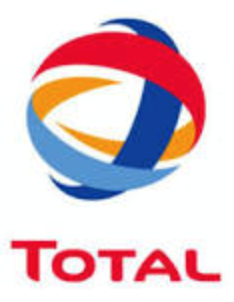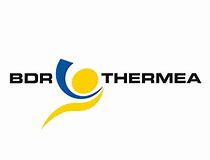Synthèse
The global geothermal market has been on an upward trajectory, with forecasts predicting a significant rise in production capacity from 92 TWh to 282 TWh by 2030. The United States remains the leading producer with 18.8 TWh of geothermal energy in 2018, followed closely by Indonesia and the Philippines. In France, geothermal energy is a market with high potential yet remains largely underutilized. The Bouillante power plant in Guadeloupe is a notable producer, contributing 110 GWh, which is 6% of the island's energy production. The Soultz-sous-Forêts project in Alsace has a production capacity of 1.7 MW (12 GWh per year), and further potential exists in other regions such as the Massif Central and Languedoc-Roussillon. Despite a modest rise in recent years, geothermal energy's share in France’s heat and electricity production remains below 5% and 4%, respectively, with a production potential of over 3,000 MW for geothermal electricity.
Additionally, the French market demonstrates an increase of 7% in the geothermal heat pump market in 2022, suggesting a potential boost in the upcoming years amidst rising electricity and hydrocarbon prices. The regulatory framework is evolving, and with the government's 2023 action plan, there is strong support for geothermal developments, including increased financial incentives for geothermal installations, targeting a 40% increase in deep geothermal projects by 2030 and doubling the number of geothermal heat pump installations by 2025. However, the COVID-19 pandemic led to a temporary decline in the sector's sales due to the economic slowdown and reduced electricity consumption in the industrial and tertiary sectors.
Geothermal Energy in France: A Landscape of Untapped Potential and Growing Interest
The French geothermal market is characterized by significant yet underexploited potential. Despite this, there is a noticeable upward trend in both supply and demand. France's geothermal market is ripe with opportunity, converging around a few specialized companies and generating approximately between 10,000 and 20,000 jobs in the field. Geothermal energy makes up for less than 4% of France’s heat production but holds the keys to a significant portion of the country's electricity potential, estimated to be over 3,000 MW, which could cover around 90% of the nation. The residential sector, once booming in the 1970s, faced a sharp decline but has seen a resurgence in recent years, reflected by a 7% increase in the geothermal heat pump market between 2021 and 2022.
In terms of demand, geothermal installations provide heating, hot water, and cooling for over 1.2 million French residents, which is equivalent to around 1.8% of the total population. When it comes to household consumption, heating dominates electricity expenditure, making up over 60% of total electricity costs in 2022, down from previous years. Nevertheless, around 11.9% of households considered switching electricity providers, prioritizing factors such as price and service quality.
The heat pump market acts as a major driver for geothermal energy demand, exhibiting strong growth with a 30% increase in air-to-water heat pump sales and a 7% climb for geothermal heat pumps between 2021 and 2022. Indeed, the significance of the heat pump sector is underscored by its position in France’s renewable energy contribution, which stood at 12% in 2021 and is expected to shoot up to 34% by 2035, and nearly half by 2050.
When it comes to the supply side, two categories of geothermal energy are prominent: shallow geothermal on one hand and deep geothermal on the other, with the latter comprising both hydrothermal systems and advanced systems tapping into higher temperatures of between 200°C to 600°C. The installation costs naturally vary with the complexity of technology, and for a typical shallow geothermal installation, one might expect to spend approximately 19,600 euros. Regulation-wise, the French market is governed by an array of intricate laws, but the conditions are relatively supportive compared to other European countries.
Prominent Participants in the French Geothermal Energy Market Landscape
As France navigates its energy transition, the geothermal market exhibits a dynamic interplay of established and emerging participants, each contributing uniquely to the sector’s development.
Among the historical suppliers, Électricité de France (EDF) is a name synonymous with energy in France, with a legacy spanning decades and a dominant presence in the electricity production landscape.
Local distribution companies (ELDs) serve as regional entities within the market, catering to specific local energy needs and playing significant roles in their respective territories. While these companies may not boast international name recognition, their importance at the community level is considerable.
On the other side of the spectrum are alternative suppliers such as Engie and TotalEnergies, companies that have diversified into the renewable energy space, including geothermal, and are challenging the status quo with competitive offers and innovative technologies. Their agile approaches allow them to capture niche markets and add a robust competitive edge to the sector.
The Transmission System Operator (TSO), Réseau de Transport d'Électricité (RTE), ensures that electricity produced, including from geothermal sources, flows efficiently and reliably across the high-voltage transmission network. As a subsidiary of EDF, RTE plays a crucial part in balancing the national grid and facilitating the integration of renewable energies.
Functioning at the grassroots level is Enedis, the Distribution System Operator (DSO) that oversees the delivery of electricity to end-users through an extensive network of lines and substations. Their role is instrumental in ensuring that geothermal power, along with electricity from other sources, reaches homes and businesses across France.
Local distribution companies in various regions complement the efforts by managing more localized distribution networks tailored to the needs of their specific localities. These entities ensure that electricity, regardless of its source, remains accessible to even the most remote customers.
As France propels forward with ambitious targets for renewable energy, notably geothermal energy, these key players form the backbone of the country's energy market. Their collaborative and individual efforts underpin the overall success of France's sustained commitment to cleaner, sustainable, and more self-sufficient energy solutions.
à la compréhension de ce marché
Détail du contenu
 Informations
Informations
- Nombre de pages : 30 pages
- Format : Version digitale et PDF
- Dernière mise à jour : 27/04/2023
 Sommaire et extraits
Sommaire et extraits
1 Market overview
1.1 Introduction
Geothermal energy is the use of the natural heat of the ground or groundwater as a means of heating or producing energy (mainly electricity). Collectors are buried in the ground and connected to a boiler to generate constant heat for heating a home in winter and cooling it in summer. At a depth of 60 cm, for example, the ground temperature is a constant 14°. There are several different types of geothermal energy : shallow, low-temperature geothermal energy, deep, high-temperature geothermal energy and very deep, high-temperature geothermal energy. There is also high-energy, low-energy and very low-energy geothermal energy.
Geothermal energy accounts for less than 4% of heat production in France and 5% of electricity production. France's potential for geothermal energy production is over 3,000 MW of geothermal electricity, which is a significant figure ; 90% of the country could be covered by surface geothermal energy. This market brings together around a hundred companies in France and over 15,000 jobs in energy companies and geothermal specialists.
Despite tax credits, the geothermal market is slow to take off in the residential sector (whereas it was booming in the was booming in the 1970s, it came to a halt with the fall in oil prices in the 1980s). Nevertheless, in 2022, the geothermal heat pump market is up 7% on 2021, and the upturn in the new housing market could boost this market segment over the next few years.
In 2023, against a backdrop of rising electricity and hydrocarbon prices, geothermal energy will become an alternative to traditional energy sources, and the government has launched an ambitious plan to promote this still little-known energy source.
1.2 Overview of the global geothermal market
Geothermal energy has been growing steadily since the early ****s. Indeed, geothermal energy production capacity has risen from ** TWh to ** TWh in ****. This segment of renewable energies is set to continue growing in the future: forecasts suggest that production capacity will rise to *** TWh in ****.
Geothermal energy production in the sustainable ...
1.3 Geothermal energy in France : a high-potential but under-exploited market
In France, only the Bouillante power plant in Guadeloupe produces geothermal electricity on an industrial scale. With a capacity of **.* MWe divided between two units, it produced *** GWh in ****, i.e. *% of the island's electricity production.
Initiated in ****, the Soultz-sous-forêts (***) program aims to perfect geothermal technology by extracting heat from ...
1.4 The effect of the COVID-19 pandemic
As the graph below shows, the Covid-** epidemic led to a drop in the sector's sales. This was due to the unprecedented economic slowdown, which led to a drastic drop in electricity consumption in the tertiary and industrial sectors. Industry, especially manufacturing, saw its consumption fall by almost **%, and by **% for ...
2 Demand analysis
2.1 Trends in electricity consumption in France
The **** Energy and Climate Act sets a target for France of **% of energy produced from renewable sources in gross final energy consumption by ****. The share of renewable energies has risen by ** points since ****, reaching **.*% of gross final energy consumption in ****. This increase is the result, on the one hand, of a ...
2.2 Geothermal energy demand in France
Heating networks and all geothermal installations assisted by heat pumps supply around ***,*** housing equivalents, of which ***,*** (***). Thus, residential demand remains an important determinant of geothermal energy demand in France.
Focusing on household use of electricity in a residential context, it appears that heating accounts for the majority of electricity expenditure. In ...
2.3 Heat pump market drives demand for geothermal energy
The heat pump market in France is experiencing strong growth. Between **** and ****, sales of geothermal heat pumps rose by *%, while sales of air-to-water heat pumps reached a new all-time high in ****, up **% on ****.
Overall, the market is set for very strong growth between now and **** : the use of heat pumps represented ...
3 Market structure
3.1 The electricity value chain: generation, supply, transmission and distribution
On the electricity market, we can distinguish four types of player, based on the major stages in the organization of the sector:
Electricity producers: they operate nuclear or conventional thermal power plants (***) to create electricity. Electricity suppliers: they buy electricity from producers and sell it to consumers. Transmission System Operators (***) : they ...
3.2 Energy producers and suppliers in France
Since the French electricity and natural gas markets were fully opened up to competition on July *, ****, consumers have been free to choose their energy supplier.
Following this opening, non-incumbent suppliers, known as alternative suppliers, have entered the retail electricity market, and consumers can choose between two types of offers:
market offers, ...
3.3 The role of geothermal energy in France's energy transition
In mainland France, the potential of geothermal energy for power generation has yet to be fully exploited. The Soultz-sous-Forêts project uses Enhanced Geothermal System (***) technology, which involves heating water to nearly ***°C by injecting it deep into hot rock. When the water returns to the surface in gaseous form, it ...
4 Offer analysis
4.1 Geothermal energy supply typology
*. Shallow geothermal energy (***)
From just a few meters below the surface, the Earth's temperature is constant all year round. This individual form of geothermal energy draws energy from the subsoil using one (***) vertical probes, generally at a depth of between *** and *** meters. At this depth, the ground temperature is between **° and ...
4.2 Geothermal energy price trends in France
The cost of a geothermal installation varies according to the type of system. More than half the cost of a system is for drilling. Most of the cost of a geothermal heat pump comes from the manufacturing phase. The example shown relates to the installation of a geothermal heat pump on ...
5 Regulations
5.1 Regulatory framework
A number of often outdated regulations governing energy in France hinder the development of renewable energies. In fact, France has regulatory texts that have enabled the development of technologies that were sometimes non-existent at the time they were drafted ; the geothermal sector is no exception to this rule. In terms of ...
5.2 Grants and subsidies: the government's geothermal action plan for 2023
Energy efficiency plan
In October ****, in the context of the current energy crisis, a plan to reduce energy consumption was presented, with the aim of cutting overall consumption by **% by **** and **% by ****.
The main measures are as follows:
Households that reduce their energy consumption will be entitled to agas and electricity ...
 Liste des graphiques
Liste des graphiques
- Production d'énergie géothermique dans le scénario de développement durable,
- Principaux pays producteurs d'électricité d'origine géothermique
- Chiffre d'affaires des différentes filières de chaleur renouvelable
- Production primaire d'énergie géothermique
- Consommation d'énergies renouvelables par filières
Toutes nos études sont disponible en ligne et en PDF
Nous vous proposons de consulter un exemple de notre travail d'étude sur un autre marché !
Dernières actualités
Entreprises citées dans cette étude
Cette étude contient un panorama complet des entreprises du marché avec les derniers chiffres et actualités de chaque entreprise :
 Choisir cette étude c'est :
Choisir cette étude c'est :
Accéder à plus de 35 heures de travail
Nos études sont le résultat de plus de 35 heures de recherches et d'analyses. Utiliser nos études vous permet de consacrer plus de temps et de valeur ajoutée à vos projets.
Profiter de 6 années d'expérience et de plus de 1500 études sectorielles déjà produites
Notre expertise nous permet de produire des études complètes dans tous les secteurs, y compris des marchés de niche ou naissants.
Notre savoir-faire et notre méthodologie nous permet de produire des études avec un rapport qualité-prix unique
Accéder à plusieurs milliers d'articles et données payantes
Businesscoot a accès à l'ensemble de la presse économique payante ainsi qu'à des bases de données exclusives pour réaliser ses études de marché (+ 30 000 articles et sources privées).
Afin d'enrichir nos études, nos analystes utilisent également des indicateurs web (semrush, trends…) pour identifier les tendances sur un marché et les stratégies des entreprises. (Consulter nos sources payantes)
Un accompagnement garanti après votre achat
Une équipe dédiée au service après-vente, pour vous garantir un niveau de satisfaction élevé. (+33) 9 70 46 55 00
Un format digital pensé pour nos utilisateurs
Vous accédez à un PDF mais aussi à une version digitale pensée pour nos clients. Cette version vous permet d’accéder aux sources, aux données au format Excel et aux graphiques. Le contenu de l'étude peut ainsi être facilement récupéré et adapté pour vos supports.
 Nos offres :
Nos offres :
the geothermal market | France
- Quels sont les chiffres sur la taille et la croissance du marché ?
- Quels leviers tirent la croissance du marché et leur évolution ?
- Quel est le positionnement des entreprises sur la chaine de valeur ?
- Comment se différencient les entreprises du marché ?
- Données issues de plusieurs dizaines de bases de données
Pack 5 études (-15%) France
- 5 études au prix de 75,6€HT par étude à choisir parmi nos 800 titres sur le catalogue France pendant 12 mois
- Conservez -15% sur les études supplémentaires achetées
- Choisissez le remboursement des crédits non consommés au terme des 12 mois (durée du pack)
Consultez les conditions du pack et de remboursement des crédits non consommés.





 Stations-service : TotalEnergies finalise son accord avec Couche-Tard pour 3,4 milliards d'euros - 04/01/2024
Stations-service : TotalEnergies finalise son accord avec Couche-Tard pour 3,4 milliards d'euros - 04/01/2024
 Engie New Ventures mise sur Upstream Tech, start-up spécialiste de la gestion de l'eau - 16/12/2023
Engie New Ventures mise sur Upstream Tech, start-up spécialiste de la gestion de l'eau - 16/12/2023

















